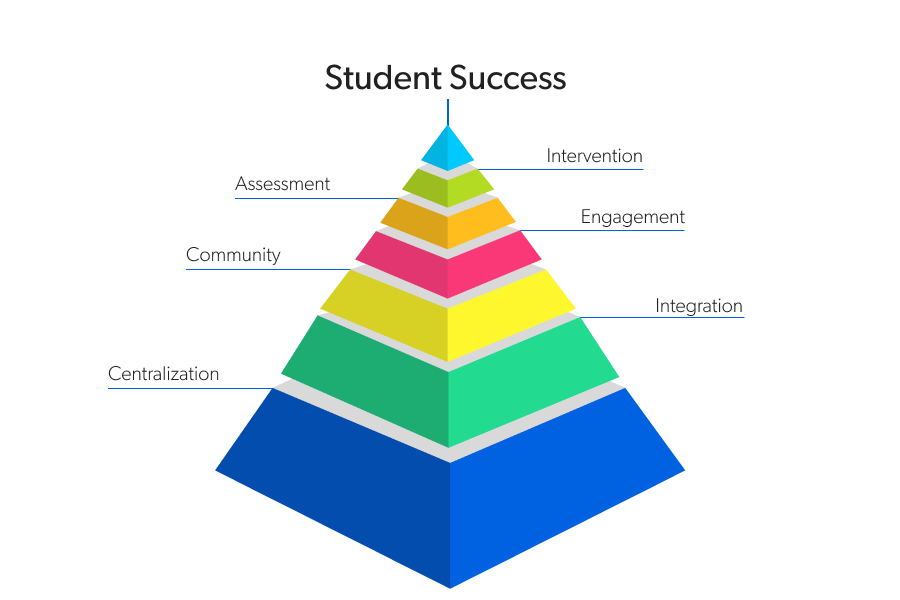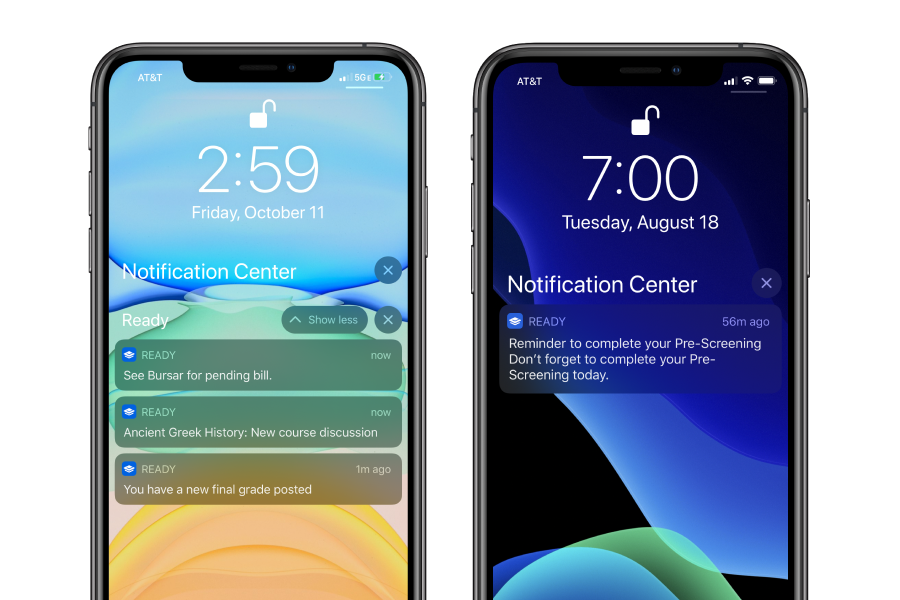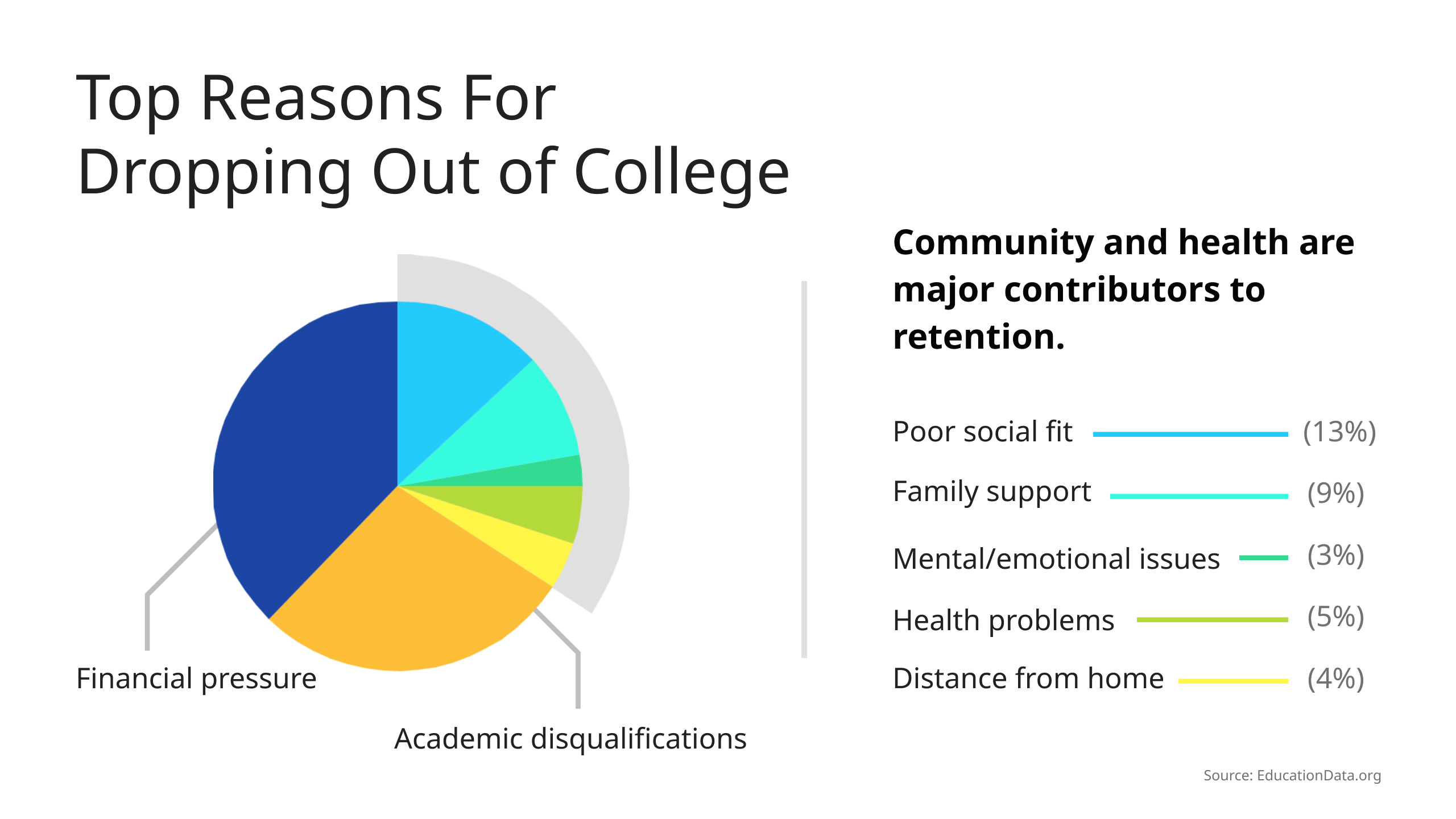The Digital Student Experience:
Social Media Is Not The Answer
How colleges and universities can foster
a sense of belonging and
build a strong campus community


The college experience is in crisis. During COVID-19, institutions were forced to rapidly reimagine the student experience in an online world, and getting it right has never been more important. The change to digital has left students feeling isolated, disconnected and facing mental health challenges like never before. Students are feeling left out in the same virtual spaces institutions are relying on to make them feel connected.
In order to fulfill our promise to students, we need to include a strategy to provide the sought-after college experience whether they are on-campus or online and fosters a strong sense of belonging. Social media is not the answer; building a community is.
Defining the Student Experience
It spans the college journey from acceptance letter to diploma. Student sense of belonging is recognized in research as the development of a support network, which helps students navigate the complexities of being college students. Developing a positive student experience includes fostering that sense of belonging along with making the journey easier and more enjoyable, while also promoting equity and wellness.
Why Crafting the Right Student Experience Matters
About 20% of students felt that the cost of their college education was not worth it. This shouldn’t be surprising; 40% of graduates were underemployed. Worse yet, some students never achieve their degree and are instead saddled with debt. This is a small window into a downward trend in consumer confidence in higher education.
Working toward an optimal experience for students positively impacts retention, career-preparedness and overall student satisfaction - this requires addressing student needs proactively and making the experience fulfilling.
Sense of Belonging
The work of researchers like Kuh, Kinzie, Buckley, Bridges, and Hayek (2006) [PDF], O’Keefe (2013), and Strayhorn (2018) have provided insights into how a student’s sense of belonging correlates with persistence and graduation rates. This is especially true when considering our most vulnerable student populations: first-generation, Pell eligible, underrepresented groups, academically at-risk, international students, and students with disabilities.
Studies show that students who feel they belong seek out and use campus resources to a greater extent and their connectedness softens the effects of stress. This suggests that strategies designed to improve a sense of belonging have ripple effects positively impacting retention. Improving sense of belonging should be the biggest focus for administrators seeking to improve the student experience.
Student Satisfaction
An important part of starting students off on the right foot for persistence is focusing on student satisfaction. Researchers developed 4 predictive models around student retention and found their predictive power doubled when factoring in student satisfaction.
"Developing a positive student experience includes fostering that sense of belonging along with making the journey easier and more enjoyable, while also promoting equity and wellness."
Unsurprisingly, a sense of belonging emerged as a strong contributor to satisfaction. Higher scores in satisfaction increased a student’s odds of persisting by as much as 80%. Students who scored highest felt welcome, had a sense of pride about their campus, and had an enjoyable student experience. The study found that, “students who feel welcome, know what’s happening on campus, and feel that they belong are more likely to return the following year.”
Strong correlations between satisfaction survey data and retention, completion, and alumni-giving have also been documented in other studies, along with a high correlation with word-of-mouth referrals.
Reaching Digital Natives
Building a digital community allows for engagement from the comfort of a dorm, extending the ‘Quad’ and allowing staff to gauge the pulse of activity and sentiment on campus. Many institutions sought to do this by shifting most of their communication to their existing Facebook account. One allure to this and other social media platforms is that they are free. Unfortunately, free doesn’t equate to good. Relying solely on social media can prove to be detrimental to crafting a positive and holistic student experience.


The Pitfalls of Social Media
Even before schools were forced to scramble to provide online equivalents to campus life, they utilized social media channels in an attempt to engage students throughout the student life cycle. Given that college students spend 8-10 hours a day on their mobile devices and 2.4 hours on social media, it is a logical platform for reaching students where they are. However, as a strategy to engage students, build community, and foster a sense of belonging, mainstream social media can do more harm than good.
Mental Health
Despite the fact that there are clear negative consequences to mental health, institutions may be slow to abandon their social media platforms as they appear to connect students. But at what cost? We know that the majority of students who dropout of college indicate that their mental health was in some way connected to their decision to leave (Lipson & Eisenberg, 2018).
Data Privacy
We also know that social media pages are not secure which may put their students at risk. Institutional social media sponsored pages are not firewalled and don’t authenticate through any type of secure sign-in tool. Nor are these platforms FERPA compliant, which means that schools attempting to build community via these channels could inadvertently be taking legal risks.
Fake Friends
Social media platforms may help drive engagement with posts, but they don’t foster campus connections. This is reflected in this NASPA study on students’ experiences of cognitive dissonance and discomfort when using social media. Having a digital experience that is designed to foster connections between students and those who can help them succeed can mean the difference when navigating challenges like financial aid or finding academic support.
A Holistic Strategy for Digitizing the Student Experience
Institutions need a holistic approach to the digital student experience supporting their student success initiatives. Social media is only a small piece of the puzzle.
For institutions wanting to foster a sense of belonging, build a community, and deliver on the promise of an excellent digital experience that modern students demand, there are several components of an effective strategy that need to be included:
Control and Ownership
Many of the pitfalls of building community on social media come from the lack of control given to schools. Solutions should offer visibility to administrators, strict user-validation, ownership of messaging, and the ability to remove harmful posts.
Safety and Security
By including only authenticated users and having control over data access, administrators can ensure FERPA compliance. Additionally, with keyword triggers, administrators can be alerted to the usage of certain words so that they can be addressed quickly. Tools like these can save lives by allowing staff to intervene during mental health crises.
Utility and Seamless User Experience
Digital transformation of the on-campus experience should be as seamless as students expect their favorite apps and websites to be. Part of making a solution that is useful to students is integrating and centralizing key services and resources in one place. Ideally, an app is the gateway for integrated and centralized services (LMS, SIS, etc.) where students can connect to each other, ask questions to staff, and find relevant events. With this approach, schools can craft a holistic and positive student experience.
Improved Communication
Students are on their phones 8-10 hours a day and the most effective way to communicate with them is through push notifications. Push notifications can be targeted based on student characteristics and behavior.
“They find email an out-dated communications method, and are 3x likelier to open a chat message received through a push notification." (Forbes, 2016)
Personalization
A digital student experience should be personalized to meet the needs of each student where they are, how they communicate (mobile), and relevant to where they are in their student journey. Institutions need to be able to target personalized messaging to individuals and cohorts of students.
Leverage Data for Student Success
By hosting a centralized community, institutions own the data and are able to leverage it for student engagement, retention, and success initiatives such as building preventive mental health interventions, identifying at-risk students, or tracking event engagement.
Engagement in a digital community and building a virtual support network (friends, access to support) are early signs of a student’s likelihood to persist.
Use Social Media For Branding
Students connect with an institution’s brand before they ever decide to apply and throughout the entire student life cycle. External tools like social media are a primary channel for building and promoting a brand to a broader community.


Next Steps
How can schools provide a campus community-building digital experience for their students while avoiding the pitfalls of relying on existing platforms? Look for tools that will allow students to connect with one another in a secure environment, are FERPA compliant, and will allow staff to identify students who might need additional support. Schools should centralizate their communication on a single platform to eliminate the white noise created by strategies that depend on email, texting, and the plethora of social media messaging created by departmental silos. Single app solutions that foster community-building, empower students to connect with staff, faculty, and services, and allow the institution to own the data are considerably better options for both schools and students.
This content was paid for and created by Ready Education. The editorial staff of The Chronicle had no role in its preparation. Find out more about paid content.



